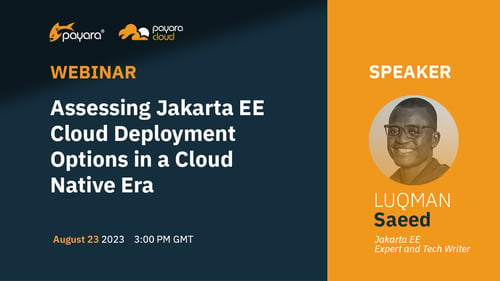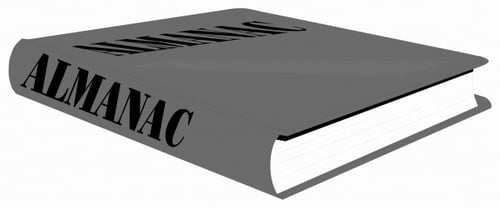Java 21 and the Upcoming Jakarta EE 11: A New Era of Cloud Native Java
Published on 19 Sep 2023
by Luqman Saeed
Topics:
JakartaEE,
Java,
Jakarta EE
|
1 Comment
With Java 21 released today and Jakarta EE 11 slated for release in Q1 of 2024, the landscape for Java development is evolving rapidly, particularly in the cloud-native space. Although these two are not being developed together, they are intrinsically linked: Jakarta EE 11 will have Java 21 as its base Java SE version. This blog post will explore what these two significant releases bring to the table individually and how they can collectively enhance cloud native Java development.
What's New in the September 2023 Payara Platform Release?
Published on 15 Sep 2023
by Luqman Saeed
Topics:
JakartaEE,
Payara Platform,
Payara Enterprise,
Payara Community,
Jakarta EE
|
0 Comments
We are excited to announce the latest releases of the Payara Platform: Enterprise 6.6.0 and Community 6.2023.9. Payara Platform Enterprise 6.6.0 comes with 2 security fixes, 2 bug fixes, 5 component upgrades and 3 improvements. Payara Platform Community 6.2023.9 also comes with 2 security fixes, 2 bug fixes, 5 component upgrades, and 3 improvements.
For Payara Enterprise users, Payara Platform 5 is still updated! Payara Platform Enterprise 5.55.0 is out this month.
Easily Manage Different Java Versions on Your Machine with SDKMan!
Published on 30 Aug 2023
by Luqman Saeed
Topics:
Java EE,
Java 8,
Java 11,
Java
|
0 Comments
So, you're a Java developer, or maybe you're aspiring to be one. Either way, you've probably faced the challenge of managing multiple versions of Java on your machine. One project requires Java 8, but another needs Java 11, yet another requires Java 17. The open-source library you're keen on contributing to needs yet another version. What do you do? You start juggling environment variables, and before you know it, your system is a tangled mess of configurations. Not fun, right?
And let's not even get started on the difference between JRE and JDK. It's easy for beginners to get confused about the distinction between the two. The JRE (Java Runtime Environment) is sufficient if you just want to run Java applications, but if you're going to be developing them, you'll need the JDK (Java Development Kit). The JDK includes everything the JRE has, plus additional tools and utilities for developers like the Java compiler, or javac.
Tired of all this complexity? Let me introduce you to SDKMan!, a version manager that streamlines the process, making it a breeze to manage multiple Java versions on your machine. Not just Java, SDKMan! can be used to manage a lot more kits and tools such as Maven. In this blog post however, we see how to use SDKMan! to effortlessly manage different versions of Java on the same machine.
What's New in the August 2023 Payara Platform Release?
Published on 17 Aug 2023
by Luqman Saeed
Topics:
JakartaEE,
Jakarta EE
|
0 Comments
Coming fresh and energised from summer vacation, the Payara engineering kitchen presents to you the August 2023 release, with bug fixes and component upgrades. Payara Platform Enterprise 6.5.0 comes with 10 bug fixes and a component upgrade. Payara Platform Community 6.2023.8 also comes with 10 bug fixes and 1 improvement.
What's New in the July 2023 Payara Platform Release?
Published on 13 Jul 2023
by Luqman Saeed
Topics:
New Releases,
Payara Enterprise
|
0 Comments
Coming out of the Payara pond to help cool down your summer, the Payara July 2023 release is out with enhancements and bug fixes. Payara Platform Enterprise 6.4.0 comes with 5 bug fixes, 1 improvement, and 3 component upgrades. Payara Platform Community 6.2023.7 also comes with 5 bug fixes, 3 component upgrades, and 2 improvements.
Exploring the JSON-P API: Simplifying JSON Processing In Jakarta EE 10
Published on 29 Jun 2023
by Luqman Saeed
Topics:
Java EE,
JakartaEE,
Jakarta EE
|
0 Comments
JSON (JavaScript Object Notation) has become the de facto standard for data interchange in modern web applications. Its simplicity, readability, and compatibility have made it a popular choice for representing structured data. The JSON-P (JSON Processing) API provides a powerful and convenient way to parse, generate, transform, and query JSON data on the Jakarta EE Platform. In this blog post, we will explore the fundamentals of the JSON-P API, its core functionalities, and how it empowers you to work with JSON effortlessly in your Jakarta EE applications.
Getting Started With Apache Camel On Jakarta EE 10
Published on 22 Jun 2023
by Luqman Saeed
Topics:
Java EE,
JakartaEE,
Jakarta EE
|
0 Comments
Apache Camel is an open source enterprise integration framework that helps you connect different systems and applications together with as little effort as possible. It provides a simple and powerful way to define and implement message-based routing and mediation rules. It is an implementation of the patterns described in the book Enterprise Integration Patterns by Gregor Hohpe and Bobby Woolf.
In simple terms, Apache Camel acts as a "translator" or "bridge" between different systems. It allows you to easily route, transform, and process messages as they move from one system to another. It supports a wide range of communication protocols and data formats (JSON, XML, YAML, etc.), making it easier to integrate different technologies and applications.
What's New In The June 2023 Payara Platform Release?
Published on 14 Jun 2023
by Luqman Saeed
Topics:
MicroProfile,
JakartaEE,
New Releases,
Jakarta EE
|
0 Comments
Coming at the dawn of summer, the June release of the Payara Platform is out with enhancements and bug fixes. Payara Platform Enterprise 6.3.0 comes with 2 bug fixes, 1 improvement, and 1 component upgrade. Payara Platform Community 6.2023.6 also comes with 2 bug fixes, 1 component upgrade, and 1 improvement.
Payara 5 Enterprise will also receive a new release: Payara Platform Enterprise 5.52.0, available only to those using Payara Enterprise. If you are still with Payara 5 Community, remember it is discontinued,contact usto find out how you can still receive a supported platform.
Keep Up With Java Platform Changes Through The Java Almanac
Published on 13 Jun 2023
by Luqman Saeed
Topics:
Java
|
0 Comments
Oracle, together with the Java Community over the last few years, have changed the release cadence of the Platform. With biannual releases, the Java of today is a remarkable departure from Java 8. With all the rapid advancement of the language comes the problem of keeping up as a developer.
Thankfully, Java Champions Marc R. Hoffmann and Cay S. Horstmann came up with the Java Almanac website. JA is a great resource that gives you both a summary and detailed overview of changes on the Java Platform from Java 1.0 to Java 22.
The changes are organised in a tabular format with details, links to the respective API and a helpful comparison page. It also has a download page with options to download from any of the JDK distros. All in all, Java Almanac is a great resource to keep abreast of the new release cadence of the Java Platform.
Exploring Java Records In A Jakarta EE Context
Published on 30 May 2023
by Luqman Saeed
Topics:
JakartaEE,
Java
|
0 Comments
Java Records, one of the major highlights of the Java 16 release, provides a concise and immutable way to define classes for modelling data. This conciseness lends itself useful in a typical Jakarta EE application that can have a number of layers that need to share data. For example the data layer might want to return a subset of a given data set to a calling client through a data projection object. The REST layer might want to have separate entities for server and client side among others. This blog post explores the adoption of Java Records in a Jakarta EE application as a data transfer and projection object.

.png?width=500&name=MicrosoftTeams-image%20(72).png)








